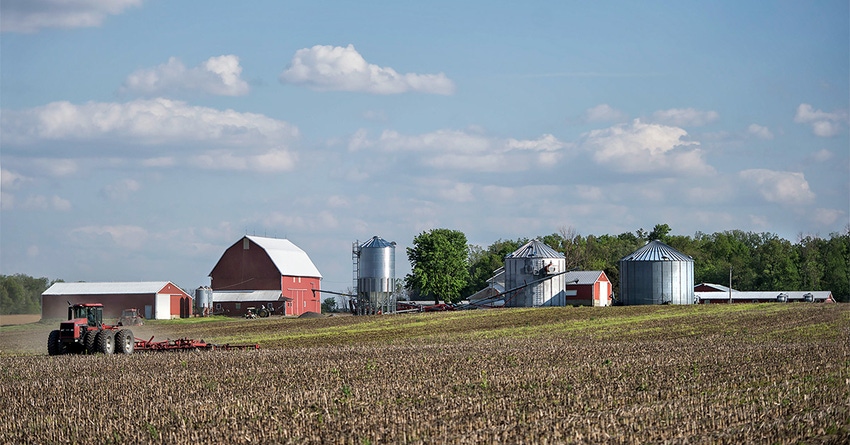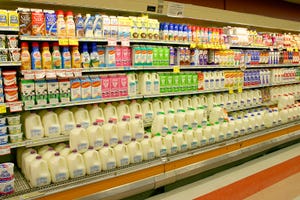Crop, livestock production to remain abundant
Commodity demand continues to suffer from slow global economic growth.

Crop prices are well below the record levels of 2010-13 as U.S. and world supplies remain abundant, even with a shortfall in South American corn and soybean production in 2016, according to University of Illinois agricultural economist Darrell Good, who recently provided a crop and livestock outlook at the 2016 Illinois Farm Economics Summit. He said commodity demand also continues to suffer from prolonged, slow economic growth in much of the world.
“The lower prices are expected to persist until there is a shortfall in production in a major producing region or until U.S. and world economic growth accelerates,” Good said.
Corn prices remain pressured by four consecutive large crops in the U.S. While exports received a boost from Brazil's corn production shortfall in 2016, Good suggested that export demand will weaken in the second half of 2017 if South American production rebounds.
On the domestic side, corn demand remains weak due to a slow increase in ethanol production and declining livestock prices. “Still, feed use of corn will be supported by the expansion in livestock production and by low corn prices,” Good said.
After declining to 820 million bu. at the end of the 2012-13 marketing year, stocks grew to 1.74 billion bu. at the end of the 2015-16 marketing year and are projected to be 2.4 billion bu. at the end of the current year.
Planted corn acreage is expected to decline in 2017 in favor of more soybean acres. Good said a 3 million-acre reduction and a trend yield near 169 bu. would result in the 2017 crop being 1 billion bu. smaller than the 2016 crop. Such a reduction would result in fewer stocks by the end of the 2017-18 marketing year. Corn prices are expected to average near $3.30/bu. during the current year and near $3.60/bu. during the 2017-18 marketing year if world production unfolds as expected, he said.
Soybean prices have remained high relative to the price of corn and wheat, even with three consecutive large crops in the U.S., according to Good.
“Exports have been supported by continued large imports by China and by the shortfall in South American production in 2016. As a result, U.S. stocks of soybeans were less than 200 million bu. at the end of the 2015-16 marketing year,” he said.
The very high-yielding crop of 2016, however, is expected to push 2016-17 marketing year ending stocks to 480 million bu., Good added.
Planted acreage of soybeans in 2017 is expected to increase, perhaps by as much as 4 million acres, due to the low prices of corn and wheat and the lower cost of producing soybeans relative to corn.
However, the very high soybean yields of the past three years make it more difficult to anticipate yields for 2017, Good noted. A yield near 48 bu. would result in a 2017 crop that's about 200 million bu. smaller than the 2016 crop but would still point to a further increase in U.S. stocks by the end of the 2017-18 marketing year.
Soybean prices are expected to average near $9.20/bu. during the current year and near $8.75/bu. during the 2017-18 marketing year if world production unfolds as expected. Expanding biodiesel production has the potential to support prices at a higher level, though, Good said.
U.S. wheat production increased by 250 million bu. in 2016 even as harvested acreage was reduced by 3.4 million acres. Soft red winter wheat production was down 15 million bu. and has declined 37% from 2013 to 2016. Foreign wheat production in 2016 was large for the fourth consecutive year, Good noted.
U.S. exports of soft red winter wheat are expected to decline by 30 million bu. this year, while exports of other classes of wheat are expected to increase by 230 million bu. Stocks of all classes of U.S. wheat are expected to grow to a 29-year high of 1.14 billion bu. by the end of the current marketing year.
“A sharp decline in winter wheat production is expected in 2017, reflecting a decline in acreage as well a decline in yield from the record 55.3 bu. of 2016,” Good said.
He pointed out that most of the Illinois wheat crop is sold at or shortly after harvest, so the average price received for the 2016 crop will be near $3.90/bu. An average near $4.50/bu. is expected at harvest time in 2017.
Livestock outlook
According to Good, livestock prices reached a peak in 2014 due to reduced red meat production resulting from high feed prices, drought conditions in cattle-producing areas and disease in the U.S. hog herd. Production has now rebounded, and prices have declined sharply. Still, further production increases are on tap for 2017.
Good said U.S. pork production has increased steadily since 1986, except for a fairly flat period from 2008 through 2014. Production is expected to increase from 25.0 billion lb. in 2016 to 25.8 billion lb. in 2017.
Exports are expected to increase from 5.2 billion to 5.4 billion lb., while imports are expected to stabilize near 1.1 billion lb. Domestic pork supplies are projected to be 51.0 lb. per capita in 2017, up from 49.9 lb. in 2016 and 49.7 lb. in 2015.
The average price of hogs was near $50/cwt. in 2015 and about $45.50/cwt. in 2016. An average of around $40/cwt. is expected for 2017, with the highest prices coming in the last half of the year.
U.S. beef production reached a 22-year low in 2015 but is expected to increase from 25.1 billion lb. in 2016 to 26.2 billion lb. in 2017 due to the expansion in the cow herd that started in 2015 and the continuation of low feed prices.
Good said exports are expected to increase from 2.5 billion lb. in 2016 to 2.6 billion lb. in 2017, while imports are expected to decline from 3.0 billion to 2.7 billion lb.. Domestic per capita beef supplies are projected to be 56.6 lb. in 2017, up from 55.4 lb. in 2016 and 53.9 lb. in 2015.
Fed cattle prices averaged near $148 in 2015 and about $120 in 2016 but are projected to average only about $105 in 2017.
About the Author(s)
You May Also Like


